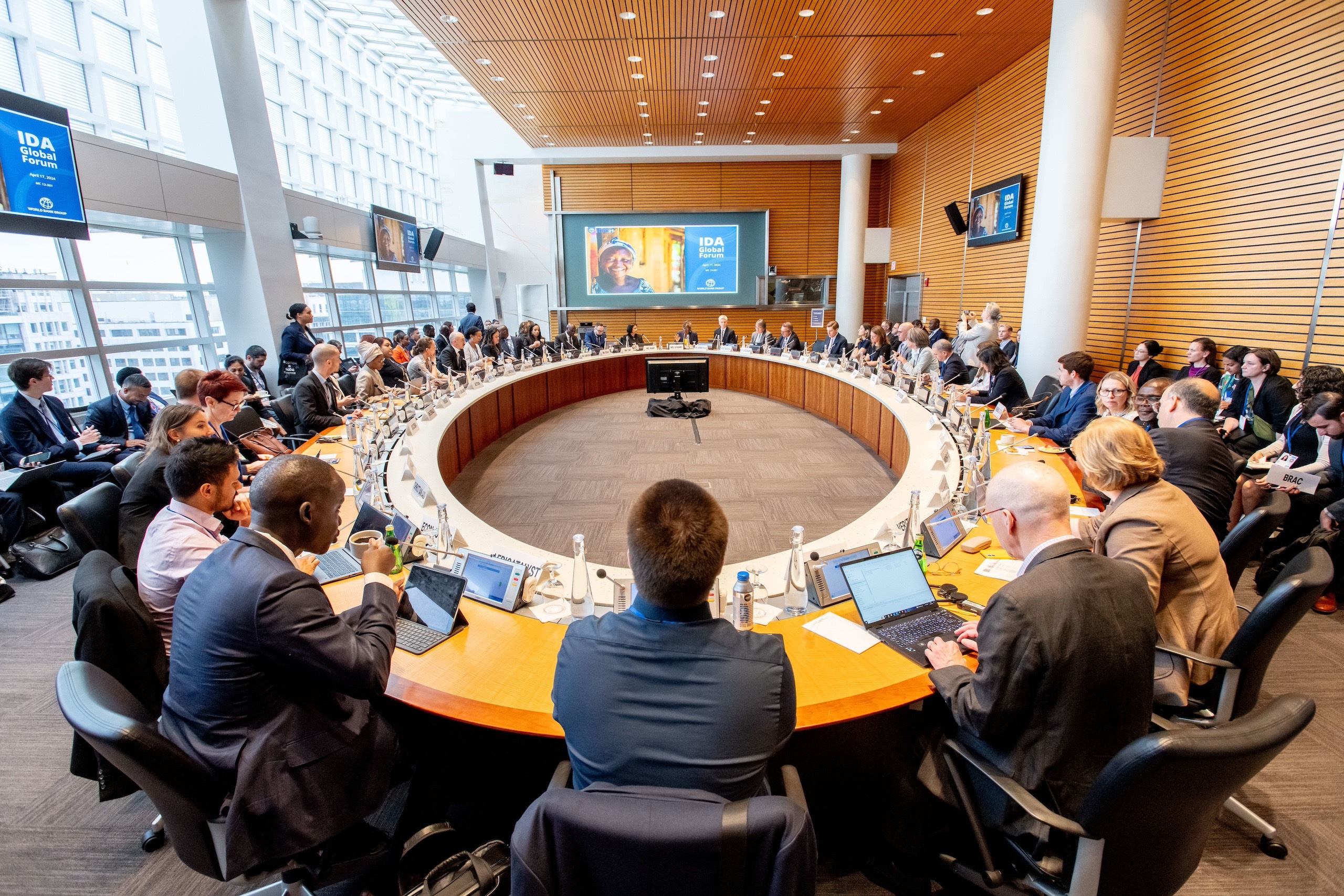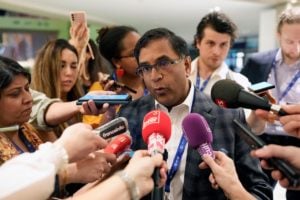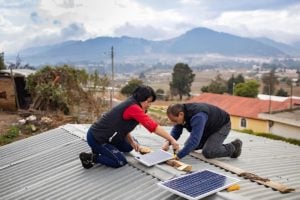This year’s International Monetary Fund (IMF) and World Bank Group Spring Meetings opened amidst news of two startling findings.
First, one in three economically vulnerable countries are now poorer than before the onset of the Covid-19 pandemic, the World Bank reported.
Second, in 2023, developing countries received USD 200 billion less from international financial institutions than what they paid in bond and loan repayments.
These hard realities are shaping the context of this year’s UN climate negotiations (COP29) taking place in Baku, Azerbaijan, in November, where governments are expected to agree on a new climate finance goal. For this goal to be effective, it must be supported by reforms to the international financial architecture, including revamping of the World Bank and IMF.
No more ‘billions to trillions’
At the 2015 UN climate negotiations in Paris, governments agreed to formulate a new climate finance goal by 2025 to succeed the existing target of USD 100 billion a year by 2020.
In 2021, the governments of developed countries had only mobilised USD 89.6 billion in climate finance, and are likely to have met the USD 100 billion goal in 2022, according to the Organisation for Economic Cooperation and Development (OECD).
This public finance was also expected to help mobilise vast sums of private finance through deepening local financial markets and creating a conducive climate for private investment, as captured in the World Bank’s “from billions to trillions” agenda. However, in 2022, the IMF estimated that multilateral development banks (MDBs) were only able to mobilise 1.2 times the private resources they had themselves committed.
While the amount of money attached to the climate finance goal will be a major focus at COP29, the new climate finance bargaining in Baku will need to have two elements that require engagement from the broader international financial architecture.
First, fiscal constraints, which are squeezing the ability of governments to invest in development and climate change. These constraints must be removed through an effective sovereign debt architecture.
Second, a new climate finance goal, which will not be enough on its own. The goal will need to be supported by scaled-up MDB financing that is low cost and long term.
Against these markers, what did the 2024 Spring Meetings deliver, and what needs to be done ahead of Baku?
Since October 2022, the World Bank has embarked on a series of internal policy changes to address 21st-century challenges. These include measures to stretch its balance sheet so that more money can be lent on the backs of shareholder capital.
At the Spring Meetings, the World Bank reported on a range of internal financial reforms that it had begun implementing to facilitate an increase in lending. For example, the new equity-to-loan ratio will enable the bank to lend an extra USD 40 billion over the next 10 years. It also received a fresh round of commitments totalling USD 11 billion that will enable it to boost its lending capacity.
However, the World Bank and other MDBs will have to go beyond these balance-sheet-optimisation measures to achieve the scale of financing commensurate with the development and climate ambitions of client governments. Shareholders will need to equip these banks with fresh capital, and the World Bank’s concessional lending arm will need major replenishment. A prominent report suggests that emerging market and developing economies (excepting China) will require around USD 3 trillion in additional finance a year by 2030 towards shared climate and development goals. Using these figures, the Independent Expert Group of the G20 (Group of 20) estimates that USD 260 billion will have to come from MDBs – a tripling in lending, which MDBs are still far from managing.
Debt
Debt distress is affecting many countries around the world. Of 66 economically vulnerable nations, 47 will breach their solvency thresholds if they invest the necessary resources to meet the targets of the Paris climate agreement and UN Sustainable Development Goals. This finding underscores earlier reports that most low-income countries lack the fiscal capacity to implement their national climate-adaptation plans. More generally, a dysfunctional sovereign-debt-restructuring system has been dampening investment and slowing progress on development and climate-change priorities.
Climate-finance discussions often revolve around altering the risk-and-return profile of projects. The surrounding macroeconomic and fiscal context doesn’t receive as much attention. While this is changing, climate finance will have to go mainstream by crossing over into debt-restructuring negotiations. These must explicitly account for climate investment needs and the macroeconomic implications of climate risks.
Countries should do their part by identifying how they can increase their climate ambition even further if the international community provides corresponding debt relief and concessional finance. The UN climate process has a history of countries proposing “conditional” targets that governments agree to meet if financing or other conditions are met.
The international financial architecture also needs to be more resilient to climate shocks. The World Bank announced climate-resilient debt clauses to help borrowing governments cope with climate shocks, with the European Bank for Reconstruction and Development following suit. However, these clauses are still a long way from becoming standard features of loan agreements.
As UN climate chief Simon Stiell recently pointed out, the IMF’s Catastrophe Containment and Relief Trust is an existing tool that could help countries cope with the financial fallout of climate impacts. The trust provides debt relief to eligible IMF borrowers so that they can focus on rebuilding and recovery without having to pay precious funds back to the IMF. It could be a key instrument in the international community’s arsenal to address loss and damage. However, trust is running low, with only USD 100 million available for debt relief. IMF members need to provide more resources to the trust.
When the Paris Agreement was adopted, there was a lot of hope behind the “billions to trillions” agenda in delivering climate finance. But as debt repayments outpace new finance, countries are instead witnessing “millions in, billions out”. If climate finance is to be impactful, the new goals expected to be agreed on in Baku must be accompanied by deep reforms of the financial architecture.









